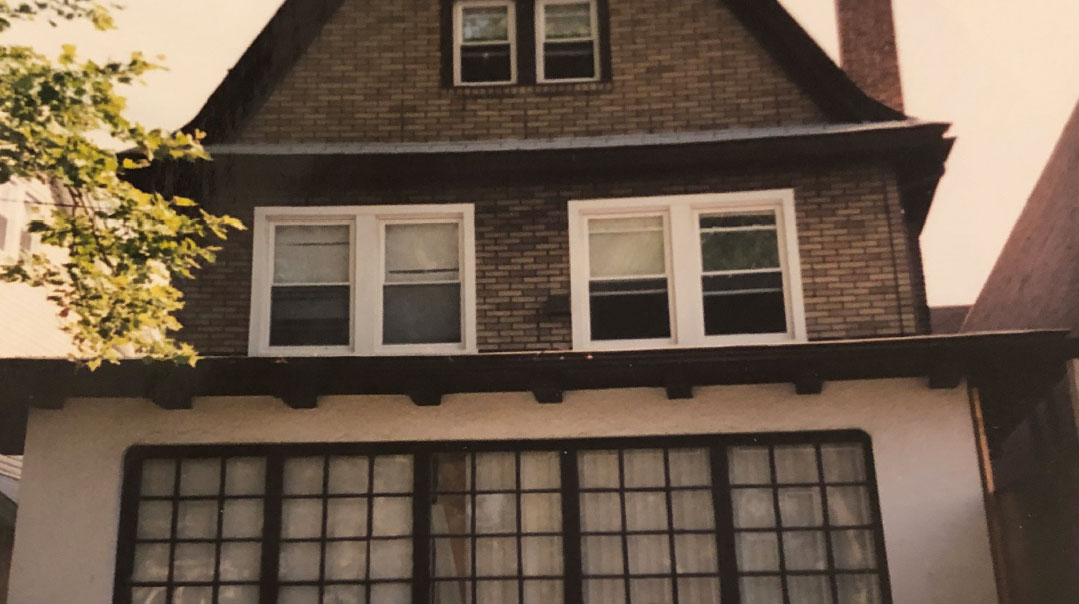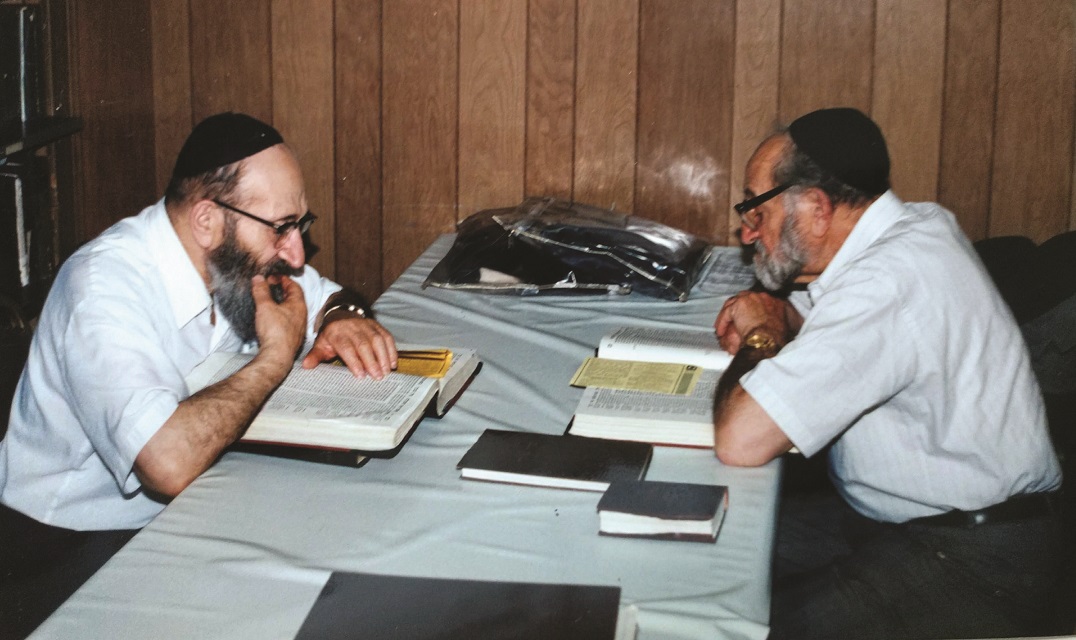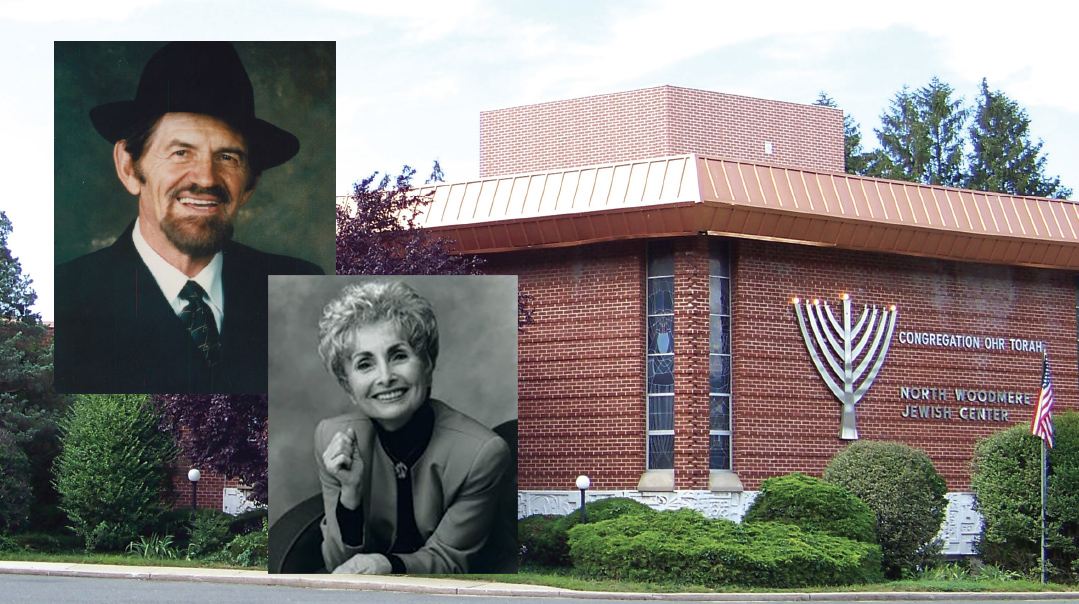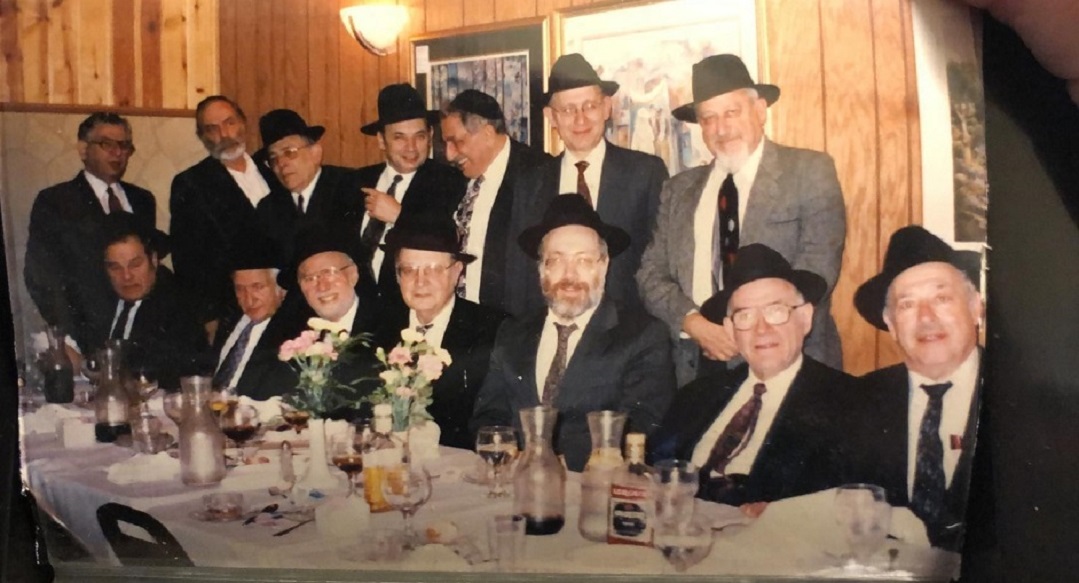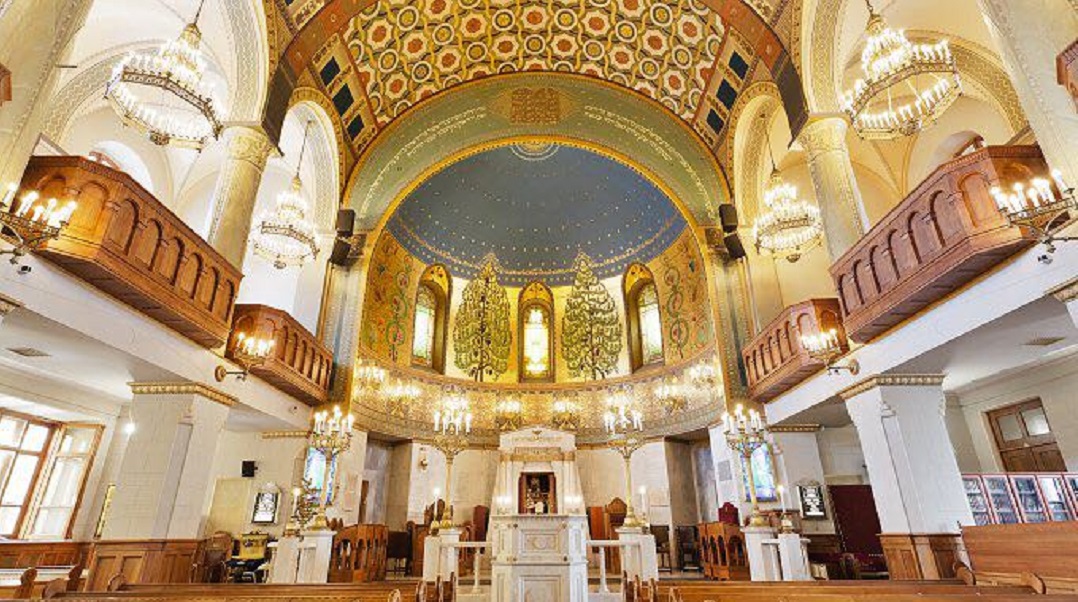Lined Up Around the Block
| September 25, 2019For some reason my father chose to become a member at Dukes Place, and that was our shul
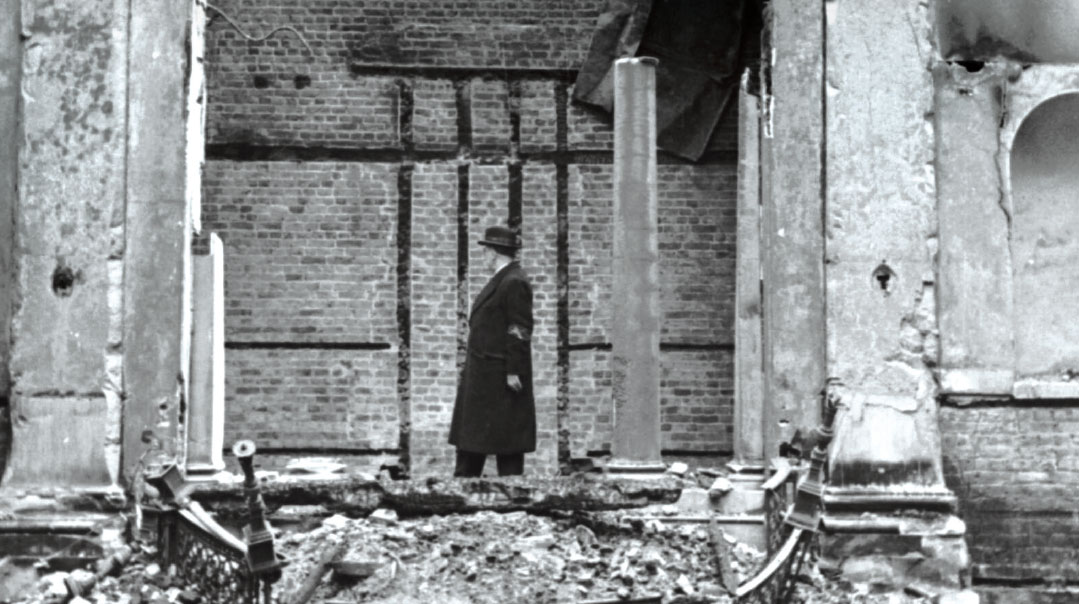
As related to Riki Goldstein by HeChover J. Steinhart
The East End of London had a lot of shuls in my day, though not quite as many as we have today in Golders Green. My parents davened in the Dukes Place shul. Dukes Place was one of the jewels in the crown of the Jewish East End. The shul was established in around 1690 and was fully active and Orthodox until it was unfortunately destroyed by German bombers in May 1941. Its real title was the Great Synagogue, but everybody called it Dukes Place.
As the Great Synagogue, Dukes Place was the base of the Chief Rabbi. The one I remember was Rabbi Joseph Hertz, Chief Rabbi of the British Empire from 1913 to 1946. He davened with us on Yamim Noraim. When it came to Unesaneh Tokef, and other such passages, he led that part of the service.
My father was a Poilishe Yid. His father and his brothers davened at the Djikover shtibel, which was one of the main shtiblach in the East End. But for some reason he chose to become a member at Dukes Place, and that was our shul.
Since it was the base of the Chief Rabbi, Dukes Place didn’t have its own rav. The dayanim of the London Beth Din used to go around to the different shuls to fly the flag, but Dayan Abramsky, the rosh beis din, davened in Dukes Place every Shabbos. Actually, when he first arrived in England from Russia, he started off at the Machzikei Hadas shul, which was on Brick Lane, also in the East End, about a ten-minute walk from Dukes Place. But once he joined the beis din, he davened with us. He gave his derashos in Yiddish, and on Shabbos Hagadol and Shabbos Shuvah the whole community of the East End would come to hear him. There was not a seat to be had in the place.
We had the greatest respect for Dayan Abramsky, and my parents were very close to him. Of course, he attended my bar mitzvah. And if you got invited up to his apartment for a cup of tea and a biscuit, it was the greatest honor.
When Dayan Abramsky became the rosh beis din of the United Synagogue, he was very unhappy with the shechitah of the London Beth Din. He worked to improve it, but that was why Rabbi Dr. Solomon Schonfeld (organizer of the Kindertransport) obtained permission from his father-in-law, Chief Rabbi Hertz, who was the only person authorized by the British government to control shechitah, to start an alternative shechitah under the name of Kedassia, on a higher standard.
When I was young, there were very few beards in the Stamford Hill area. It had only one or two large synagogues, while the shtiblach were all in the East End.
The dayanim used to rotate between the shuls. Every Friday night during the winter, a dayan or some other rav came to daven in Dukes Place and give a derashah before Barechu. Sometimes it was Dayan Moshe Swift, sometimes Dayan Isidor Grunfeld (the author and husband of Dr. Judith Grunfeld), who I recall wore his eyeglasses on a chain. There were posters on the streets of the East End announcing who would be speaking at Dukes Place on Friday night, and there were often lines to get inside. Three policemen would hold back the crowds. The shul had between 700 and 800 seats in the men’s section, as well as three or four hundred in the ladies’ gallery, I think. Once the seats were filled, they allowed around a hundred people to stand in each gangway at the entrance, too. Even non–shomer Shabbos people used to come, including Jewish boys who worked at stalls in the nearby marketplace.
My bar mitzvah was in Dukes Place on Chanukah of 1937. The shamash, Mr. Rosenthal, who lived in an apartment on top of the shul, taught me my bar mitzvah leining. I can still say the haftarah; it was “Roni v’simchi, bas Tzion, ki hineini bah v’shachanti besocheich.” I wore a bowler hat at my bar mitzvah, which was the custom in Dukes Place.
I sang in the choir at Dukes Place both before and after my bar mitzvah. The choir consisted of about 40 members, boys and men. Five were first tenors, five were second tenors, and there were bass voices, altos, sopranos and so on. I was a soprano, and I sometimes sang solo with our chazzan, Simcha Koussevitzky.
There were four Koussevitzky brothers, by the way. Simcha was first a chazzan in Glasgow, Scotland, then in Shacklewell Lane shul in Dalston, London. From 1937, he was at Dukes Place; he left England in 1952 to take up a post in Cape Town, South Africa. Moishe Koussevitzky was in Vilna and, later, New York. Another brother, Yankel, was in Poets Road shul, London. David Koussevitzky was in Raleigh Close shul in Hendon.
Even among the Koussevitzky brothers, Simcha shone. He had a tremendous voice. I still have records of him singing. The shul was always packed — chazzanus was appreciated in those days. And the pieces that choir sang! I still have my music book today.
The Dukes Place shul had three galleries. The women were in both side galleries, and the choir was in the middle gallery, so their voices would spread over the whole shul. The chazzan was at the amud, which was in the center, on the bimah; the rav stood in a pulpit, where he stood to address the congregation. As well as the main chazzan, the shul had a chazzan sheini. He was called Chazzan Hermann Mayerowitsch. He didn’t have a tremendous voice like Simcha Koussevitzky, but he knew every bit of the nusach. Mayerowitsch was also a composer, and he produced his own zemiros book. When the choir went to sing in other places, he conducted us.
The choirmaster was Mr. Lewis Shoot. He came from the heim, but he was a fantastic choirmaster. The choir singing with the chazzan was unbelievable, absolutely beautiful. I started singing as a chorister at about age eight or nine, and I had a very high voice. At times, Mr. Shoot used to wave to cut my volume. Sometimes we practiced with an organ playing, which was used for the choral weddings.
The choir sang every Shabbos, both Friday night and Shabbos morning. Friday night davening used to take an hour and a half. We sang different compositions for Lecha Dodi, a lot of tunes from the 19th-century Anglo-Jewish synagogue composer Julius Mombach, and from Samuel Alman, who was a choirmaster at Dukes Place in his time. I remember a lovely cantorial piece for “Omar Rabbi Elazar amar Rabbi Chanina, talmidei chachamim marbim shalom ba’olam” that we used to sing.
Shul started at eight-thirty on Shabbos morning and finished at 12. But before davening we had to be there in our places, and you could hear the chazzan warming up his voice. According to how good his voice sounded that morning, we knew which pieces he’d sing and how strong the davening would be.
I was once in the Normandie Hotel in Bournemouth, where I met a grandchild of Dayan Abramsky, a son of Menachem Abramsky. Menachem was a year or two older than me, and we used to be friends. The son put me in touch with Menachem, who lived in Bayit Vegan. I visited him, and I asked him a question that had been on my mind. I know that the rabbanim today don’t like it when the chazzan repeats words while he is davening. But I used to daven with Dayan Abramsky, and the chazzan repeated himself — and how! I asked Menachem if his father had minded.
He told me, “My father loved chazzanus. He used to say, ‘If a chazzan doesn’t repeat, iz er nisht kein chazzan. But if a rav repeats, er iz nisht kein rav.’ ”
The gabbaim of the Dukes Place shul were from the Rothschild family. One of the gabbaim at the time of my bar mitzvah was Lionel de Rothschild. I still have in my house a list of the shul membership from the 1930s.
Dukes Place was a very fashionable place for chuppahs in those days, particularly because of Chazzan Koussevitzky. We could have five choral weddings taking place on just one Sunday. Everyone wanted to get married there, it was such a glik. Of course, as a boy chorister, I had to be there too. We got paid for singing in the choir. I think it was one shilling and sixpence a month. It was a lot of money in those days — 18 pennies, or 36 ha’pennies — and that was my pocket money.
When I was a little boy, I had a rich uncle who lived near Commercial Road, a main East End thoroughfare. Dayan Abramsky lived there, on top of a bank. My uncle, Hershel Steinhart, served as a gabbai of the Djikover shtibel. When we went to him on Chanukah he gave me Chanukah gelt, two or three shillings, which was a large amount at that time. I changed it to 24 pence and went to Woolworths, where there was nothing above sixpence, and bought myself Meccano sets. That was the enjoyment, then.
Our part of the East End was very near Tower Bridge and the Tower of London, which houses the Crown Jewels. The Jewels exhibition cost money to view, even then. But it was free on Saturdays and only ten minutes away, so that was a common Shabbos walk for us — a walk around the Tower and the Crown Jewels. On Rosh Hashanah we said Tashlich there, at the River Thames.
Dukes Place remained formal even on Simchas Torah. The hakafos were taken only by the Board of Management, and only the chazzan and the choir sang. You could hear all the bells and the silver on those sifrei Torah. No one ever spoke in that shul. If someone did, the shamash, Mr. Rosenthal, would go right over to him, and put a finger to his lips. The talker would go red in the face and not dare to speak another word. That was the level of decorum. But remember, the davening was always beautiful and interesting, with a proper chazzan, so that helped keep the people focused.
There’s a beautiful piece said before the maftir on Shavuos, “Yetziv pisgam,” which I still know from my Dukes Place days. I have sung it in the Adass shul many times, but there, zoln zei zein gezunt, they don’t give a person a try-out to see if he knows the nusach for haftarah. In Dukes Place, you were not given a piece to sing unless you knew it properly. It was a question of tradition. Tra-di-tion!
I don’t remember any sweets in the shul, although they did throw nuts at a chassan. The truth is that I was rarely there on Simchas Torah, because we used to go back to where my father’s family davened, at the Djikover shtibel, for the hakafos. There, they threw loose nuts and raisins. And even if a raisin fell to the floor and stuck to someone’s shoe, all the children crawled down to get it and eat it — that was the antibiotic at the time!
Dukes Place stood very near the Bevis Marks shul. Bevis Marks is the oldest shul in Britain — already functioning in 1701 — and it is still in continuous use. But of course it is Sephardi, the flagship synagogue of the Spanish and Portuguese community, which was the first to return to England when Oliver Cromwell allowed the Jews back into the Empire.
Bevis Marks also had a choir, and I used to go and listen to them sometimes. The sound was very different, very Eastern. Their choir boys wore caps and gowns, which we didn’t. The whole shul was lit by candlelight, and it was so beautiful.
Bevis Marks is still standing. Sadly, Dukes Place was bombed during World War II and never rebuilt.
From Commercial Street to Ropschitz
My family lived on the Jewish East End’s other main road, Commercial Street. We lived on top of my father’s sweet shop. One of my father’s best products was his homemade kosher ice cream. It was made in the store in an old-fashioned churn: a container with ice cubes in between two rims. He poured in milk and churned it into ice cream. I also remember watching him make his homemade syrup and mix it with soda, which was sold for a penny a glass by a window that opened to the street. Customers would drink it leaning on the window.
My brothers and I bought a factory, and we manufactured kosher ice cream too. We got the finest hechsher and slowly added product lines, until we sold the business. But if you’ve been in England long enough, you’ve surely tasted Snowcrest ice cream for yourself.
My Zeide Steinhart had emigrated with his family from Ilza, Poland, to London. He was the mohel at my bris, but I have no memories of him since he passed away when I was two.
Just before I was bar mitzvah, my mother took me with her to visit her parents and her family in Ropschitz. We went by train from London to Dover, where we took the boat to Oostende. Then we took trains to Achen, Berlin, Katowice, Cracow, Tarnow, Dembitzer, and finally, after two days, arrived in Ropschitz. This was 1937, and an armed Nazi examined our passports in Berlin. My mother and I had British passports, and he saluted. But my mother’s friend from the Djikover shtibel, Mrs. Israel, was traveling on her Polish passport. The officer threw her suitcase up in the air, so that it opened and its contents spilled over the floor. Then he walked out.
Ropschitz seemed very small. There was one square in the middle of the shtetl where they used to hold a market. My zeide lived with his family in a small house, like a barn. There was no electricity, but they had a coal fire for warmth. When I asked for an orange, they were taken aback, wondering if I was ill. I sang something to my zeide, and the children of the shtetl crowded around the windows outside, to listen. They didn't know about lemonade, and were amazed when I dropped a sherbet sweet into water and made it fizz. The poverty there was so dire that they had only one fork and knife in the house.
I have a picture in my dining room of myself with my mother and my zeide, which was taken on that visit. Of course, the Yidden of Ropschitz were killed by the Germans. Years later, I went back with someone who knew the shtetl and showed me the area of my mother’s family’s kevarim. Even the beis hakevaros was utterly destroyed. Every kever was broken and desecrated.
(Originally featured in Mishpacha, Issue 779)
Oops! We could not locate your form.







